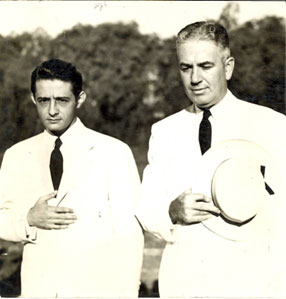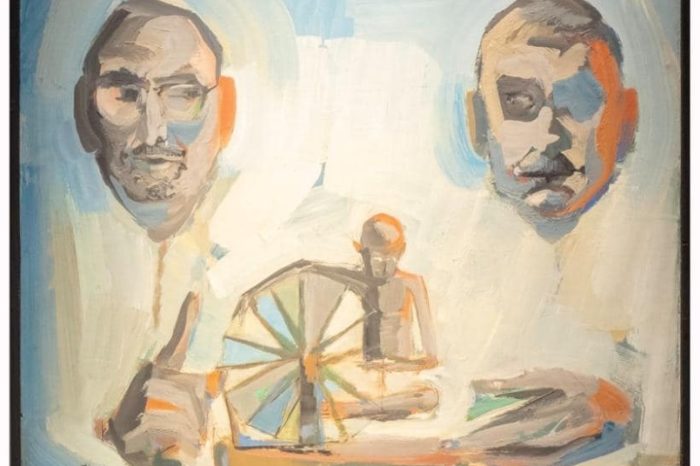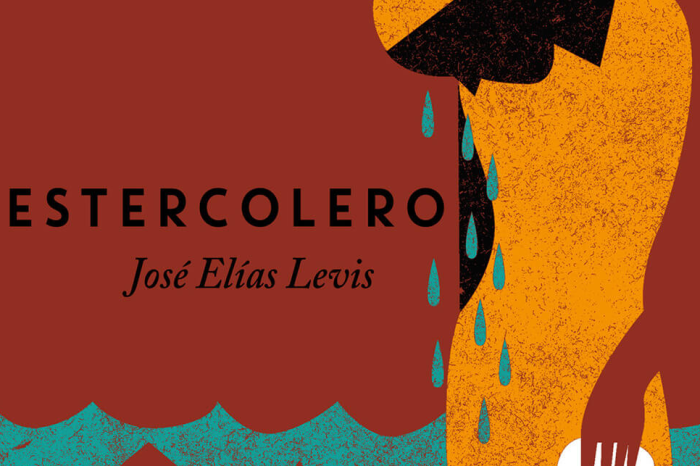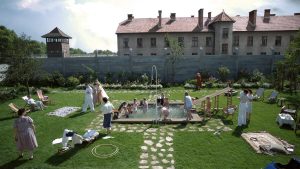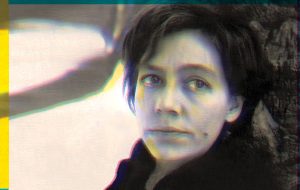IRENE DELANO SPEAKS / HABLA

La artista Irene Délano, pionera del diseño gráfico y de la serigrafía en PueroRico y Estados Unidos.
La publicación de esta entrevista hasta ahora inédita ofrece la inusual oportunidad de escuchar la palabra de Irene Delano (1919-1982), una artista que, de acuerdo con investigadores faltos de rigor y profundidad, se mantuvo a la sombra de su esposo, el también artista Jack Délano. Nada más lejos de la verdad. Quien haya estudiado la vida y obra de Irene sabría cuán asertiva, culta e independiente es esta creadora, inteligente tanto en su obra individual como en la colaborativa.
En la entrevista, realizada por el escritor (ya fallecido) Arnaldo Sepúlveda, Irene habla holgadamente sobre sus primeros años en Puerto Rico y los comienzos de la División de
Educación de la Comunidad (DIVEDCO). La entrevista revela los aciertos y dificultades en la creación y desarrollo de este proyecto según lo experimentó su protagonista. De especial interés resulta la consciencia de Irene de las contradicciones políticas inherentes a tal proyecto en el contexto colonial, y de su, en ocasiones, incómoda posición como norteamericana y como mujer en la dirección del taller de publicaciones.
La entrevista fue realizada con una grabadora portátil bajo condiciones acústicas desfavorables, empeoradas por el constante ruido de tráfico de la avenida Broadway en la ciudad de Nueva York. La grabación se quiebra en ocasiones y pierde partes del diálogo. Nuestra transcripción mantiene sin alterar todo aquello comprensible. En respeto a la palabra de Irene, mantenemos los dos idiomas que utiliza y no hemos corregido los ocasionales desaciertos lingüísticos que gozosamente sazonan su expresión. Este es el testimonio de una mujer y artista íntegra y luminosa, cuya sombra se extiende sobre buena parte del arte puertorriqueño.
La transcripción y edición fue realizada por el que suscribe en abril de 2023, con la colaboración de Laura y Pablo Delano.
-Nelson Rivera
_________________________
IRENE DELANO: Rexford G. Tugwell, the governor of Puerto Rico appointed by [President Franklin D. Roosevelt], understood a lot about the documentary photography activity and the use of it, which very few people at that time did. Jack and I had gone to Puerto Rico for the Farm Security Administration in 1941 and Tugwell understood very well what it is we were doing because he had been head of the agency in Washington before. So, when we went there in 1941, we spent three months going to every town on the island covering photographically almost all aspects of life. Jack did several thousand pictures.
ARNALDO SEPÚLVEDA: You were commissioned by the FSA?
ID: We were working for the Farm Security Administration and were originally sent to go to the Virgin Islands. Jack went ahead, just before December 7th, 1941, which was when war was
declared. Then I went on the ship from Baltimore. The ship was blacked out and it took ten days to go to San Juan. Actually, the water was already full of submarines. I didn’t know it. I was so foolhardy, I was twenty-one and I had a little movie camera, I thought, “if anything happens, I’ll photograph it”, you know, stupidity (laughs). But in any case, there were very few passengers on the freighter. We finally arrived in San Juan ten days later, around December 17th or something like that, but Jack was in Virgin Islands, and I went over there and met him.
When we finished working in the Virgin Islands we came to Puerto Rico and took the opportunity as we were there and ask for transportation out, it was very difficult to stay, and Tugwell was very helpful, he knew us and gave us all. He also had an Office of Information in La Fortaleza in which he was thinking of setting up a file at the same time on Puerto Rico because he understood the value of having documentation and photographs, in those days it was quite a new idea. In any case, we worked there and then in about February or March we were finally able to get on a military plane out of Puerto Rico. That was our first trip. The photographs that Jack took at that time, he applied for a Guggenheim [Foundation Fellowship] and got one to go back and do a book of photographs on Puerto Rico. Of course, the war years came and he was in the Army, and I worked in the Army also. In 1946 we finally returned to Puerto Rico. At that time, we thought we were going to do the book for the Guggenheim. Also, at that time Tugwell had already set up an Office of Information which he had a file. Edwin Rosskam, who was also a photographer and had been in Puerto Rico in 1937 and photographed the survivors of the Ponce Massacre, was a friend of Muñoz Marín, Rosskam had met Muñoz in 1937. He came back and was setting up that file for Tugwell.
When Jack got out of the Army, I quit my job. I was working in New York, and we came back to Puerto Rico at that time, but what happened was that we started immediately working. In any case, Jack started again photographing. By that time, the San Juan file a lot of people had worked on, Rosskam and a couple of other photographers. For instance, we sort of grabbed the schools all over the island, we went back and did a little bit in the sugar industry, we did a lot in Old San Juan. We covered a great many things in 1946 for the file.
At that time, Muñoz Marín was pres ident of the Senate and was already thinking of things that he would want to do if elected governor. He was already the president of the Senate and the Popular Party at that time I believe was already the Party in power in the Legislature, and Tugwell was still governor. Muñoz had the majority, not a big majority, but he had it in the
Senate and he was thinking of all kinds of plans, all kinds of things that could be done. We met with him. The Rosskams were old friends, and when we came, the Rosskams took us to visit Muñoz and we started talking about the whole question of education. Muñoz was saying that if he took the whole budget of the whole government and put it into education, there still wouldn’t be enough money to have all the children in school with the poverty at that time. So, he said, we’ve just got to invent things because there’s no way… At that time there was a lot more illiteracy than there is now. He’s talking about illiteracy, he said that there was probably somebody in every household that could read, perhaps it was a child, perhaps the adults didn’t know how but the children would know how. So, what I want you to do is invent something in order to reach the people in the rural areas which was the majority of the people at that time.
There hadn’t been this big movement to the urban centers. He said, we’ve got to invent something through the regular channels of the Department of Education in the classrooms and the teachers and all of that stuff, there’s no way that we can bring information to the people, to the general population, there’s no way that we can do it, certainly we don’t have the money to start building enough schools and we don’t have enough teachers and so on. So, what I want you to do is invent something that will reach the people.
And so, we spent days and hours of working and thinking how such a project would be set up that it would be useful, both in terms of bringing information, I mean, at that time there was El Imparcial, and that was one of the papers that reached more broadly in the population than anything else. But there were so many things that the people just didn’t know about. They had the radio, they heard the majority on the radio, all of these things everyone was very dissatisfied with in terms of getting real information to the people, on all kinds of things. Of course, at that time he [Muñoz] was very keen on the question of “don’t sell your vote for a pair of shoes”, I think one of the most wonderful campaigns, and reaching the people that he did at the very beginning. In any case, so he wanted that kind of information, information on health and almost every subject that the people would be getting something, something decent in the way of information of all kinds. So, Jack and Ed and I… Ed Rosskam was a very good organizer of plans and what we came up with and in all these discussions was that if we could figure out… We decided on films in terms of reaching the people in a general way. The films, of course, there were no places to show films, there was not a lot of electricity through the country and through the rural areas.
We would do it with generators and films shown out of doors. To make the thing a more
complete program that would be able to reach the families… let’s say, we decided to do something on boiling drinking water, which was one of the tremendously important things at that time because people had stomach infections…
AS: Viral diseases?
ID: That’s right, that was a tremendously important thing to do. Let’s say that that was our subject. What we thought was that we would have a poster that would announce in a certain area that a film was going to be shown at a certain time and the poster would go up and people would see it and that they would gather at that time. It had to be after dark because you couldn’t project the film in daylight. When the people would gather the film would be shown, but in order for people to have something to take home that would have all this information in it, we would do books and we would distribute the books and new editions so that almost every family in the rural areas could have one and take it home.
AS: What kind of editions?
ID: Huge large editions, but we would have to figure out how to do this cheaply. Anyway, the plan finally evolved as being that we would do a poster to announce the place where the films were shown, that the film would be shown, and at the meeting we would distribute a book that we would make for people to take home with them, and in that way perhaps we could get a message, and that if the adult didn’t read, we decided that somebody in the family would be able to read it. And we wanted to make them as lively and interesting for the people as possible. So, that was the basic plan for how we started. One of the important things then was how were we going to distribute this material. To be distributed on that scale, you’d have to have a big organization and we didn’t have any money. Muñoz remembered that the Sports and Recreation Department, it was Julio [Enrique] Monagas who was head of it at that time, had a whole fleet of jeeps and projectors because, for entertainment in the country, they had managed to get these jeeps and projectors and they showed sports films of all kinds. So, Muñoz said, why don’t we put you into the Sports and Recreation Department and there you’ll have a distribution. We said, that’s great. Julio Monagas gave us the cellar of the building, at the time it was called “El Templo
del Maestro”, a building across from the Muñoz Rivera Park which was the headquarters of the Sports and Recreation agency. It was a pretty crummy space, you know, but we had a space.
AS: Close to the Archivo General.
ID: That’s right, just a little bit farther going out of Old San Juan. It’s a little ornate building.
AS: Yes, it’s been rebuilt.
ID: Right. In those days the basement of that building was quite a lot of space, but we didn’t care, it didn’t matter to us because we knew that everything we did we would be starting with from scratch. We thought that we were learning and that everybody who would come to work would also be learning at the same time. None of us were professionals at any of these things and, besides, everything we did had to be invented as we went along. Now, on the question of the posters, the announcements in the country, we thought that that would be, first of all, how to do them, because we had to do an edition of about twenty thousand in order to reach the population. We thought that silkscreen, which is a medium which is direct paint on paper, which requires handwork but does not require machinery, would be, both artistically and practically, an absolutely wonderful medium. In other words, by doing silkscreen you have this wonderful quality that you never get in a printed thing, because it’s real paint and you’re doing it with your hands and all of that. So that the posters would have a great deal of quality, artistically.

Irene Délano en el taller de gráfica.
AS: But you would have to make twenty thousand copies.
ID: Yes, but we didn’t have any problem with getting mano de obra. It was real poverty, there were plenty of people who needed jobs. We could afford to do that, but we couldn’t afford to buy a machine that cost ten thousand dollars. Silkscreen is a very primitive way of reproducing things.
AS: “Silkscreen” is what, in Spanish?
ID: Bueno, in English and in Spanish now they call it serigrafía. It’s kind of a fancy name. In those days nobody said it, they thought that was being “arty” to say serigrafía, I thought so, I hate the word, but it is the word that’s used, “serigraph”, that’s the proper word for it. In those days it was mostly used in commercial… oh, artists used it, but basically, the big use of silkscreen in those days was to put signs on 7Up bottles and whatnot, it was used in commercial… But in fine arts… there were some people who were using silkscreen, making editions of serigraphs that they had done and so forth, but it wasn’t terribly developed. Several people were doing it, I remember coming across a silkscreen by Doris Lee that was done in the thirties. Doris Lee is a New York painter that I have at home. People were interested in it. Ben
Shahn used silkscreen for his political campaigns that he did work for. We were very influenced by him because in the election with [Henry A.] Wallace, when Wallace ran for president, they set up a workshop. It was after Wallace was vice president, when he ran for vice president and won election, but after [F. D.] Roosevelt he lost [to Harry S. Truman]. Anyway, Ben had set up a big workshop in which they did posters and all kinds of things for the campaign, and that was an instance where fine artists contributed to a political activity.
AS: It was the campaign of which party?
ID: Of the Democratic Party. We had learned a lot from this, some of his work was fantastic and the work from the shop was fantastic. It was an example of a well-known artist using his art for political purposes. Anyway, we got advice from Ben and other people. Ben had suggested to me at that time, he said, you know these offset presses are really remarkable, because you can work directly on the plate. Offset at that time was quite new, now everything is offset, but in those days, people still printed with letterpress. The offset presses were based on the idea that water and oil don’t mix, so that if you drew with a grease pencil on a plate, the ink would catch the part that you had drawn on, but the rest of it, which was water going over the plate, the oil would only stay with the oil, the oil and the ink would only hit the oil of the grease pencil on the paper. So, you could put it in the press and run it, you make a drawing, put it in the press and run it, and you’d have a result. You didn’t have to have so damn much equipment or anything, it was a more direct relation between the artist and what was going to come out of the press. He had suggested that, but at the beginning, of course, we didn’t have any presses at all, and we thought a lot about the silkscreen.
I was very excited about it because, to me, there was a very close relationship between the artist and the people who were going to see his work. It was the kind of thing that any town, any group, could do. All you have to do is make a frame of wood and stretch a piece of silk on it, block out the areas that you don’t want to print on that silk, and pull a squeegee of paint over it, and you have an impression. So that the technique of doing it… let’s say, something very simple, you wanted to do a poster about an anti-war thing, say “No war” or something, almost anybody who would work with it a little bit could write “No war” and print it, and distribute it. To me, it was a very wonderful medium because it went from something as simple as that, to a very sophisticated artist that could use the medium and produce a very sophisticated piece of work but could reproduce it. The artists today make editions of thirty serigraphs or something like that, in an edition. But my idea was that, because it’s so physically simple, and no machinery and costs so little, that any town, anybody wanted to say anything, could use such a medium as silkscreen. I was very excited about using it, even though an edition of twenty thousand was a little exaggerated, as we had plenty of people who could run the screens, we didn’t have to worry about it. That was one of the many reasons that we wanted to work in that medium.
Then, of course, in films everybody was beginning, and we had to buy some equipment there. In that basement, Jack built a little sound room for recording, and we had a big, screened porch where we set up the silkscreen. There was one person who had had some experience in silkscreen, not too much, but he could also talk English. At that time, we didn’t know any Spanish, we were taking three classes a week at night, and I had a blackboard in my office. I tried to start in Spanish the first day but, you know, everybody that worked with me was helping me, so that I was able to communicate in about four months, with errors, with plenty of mistakes, but they would always correct me, everybody there would correct me, and correct Jack, too. Jack learned better than I did.
It didn’t take us too long to be able to communicate with the people. You know, the first people that came to work were the messenger who worked there, and a janitor. I was so excited about… I mean, what I realized we had to do was start from the beginning. It didn’t matter if people hadn’t done any of this before because we knew we could teach it. We would start from the beginning because there were a few artists, but not too many, and they were not too interested in the project, well, either because they thought it was a propaganda machine for Muñoz, or they wouldn’t come to work for a woman, or they had other jobs. But there weren’t too many. Julio Rosado [del Valle] was studying outside, [Rafael] Tufiño was in Europe and, as I say, some didn’t want to work with the project.
There was a lot of antagonism about a woman running such a thing, especially a foreigner. That part is understandable. The woman part of it, it’s just very sad, but that’s how it was. So, we started to work with just the people that we could get. I said, “do you like to draw?” –they thought I was the crazy americana— and they said yes. Naturally, they’d rather draw than sweep the floor or take messages around, and so we started. In those days, it’s amazing, how little
people thought of doing anything that was in their own environment. People had a desprecio for things Puerto Rican that was appalling to us, because we, on the contrary, felt just the opposite.
AS: You mean the people you met, would you say that about the people in general?
ID: Oh, yes, in general, definitely. I don’t mean people like Tomás Blanco, who is cracking his head trying to make people understand. That’s why he wrote “Inventario de cosas nuestras”, Los cinco sentidos, and all of these things to give importance to cosas nuestras. This is something that we were constantly dealing with, desprecio. And don’t think that it isn’t true today. It’s particularly true among the penepé, I mean, it’s blatant.

Irene Délano. Tapa del libro Los cinco sentidos, de Tomás Blanco. 1955.
Anyway, I started in the shop by bringing in… I brought in a pilón, and I remember putting Manuel Hernández [Acevedo] to draw it, just make me a drawing of it. So, he made a drawing, down on the floor, and he had no idea that a drawing had any importance, it was just something that he was making his living at, at the beginning. Other people too, I would take anybody to work who would want to come, work that we had a position for, we had to have a certain number of people in order to run the screens, and I was going to teach him how to do it and that was that.
I didn’t just teach them the mechanics of running the silkscreen. We started drawing and then from the original drawings in color we would simplify the color, so that it would function in silkscreen. In other words, you have to simplify, especially what we were doing, we were doing very simple things, we were not trying to do anything very complex, we were just trying to teach people how to do it. Manuel Hernández [Acevedo], for instance, started by making a drawing of a pilón, then making a painting of a pilón, then making up a two-color version of a pilón, then you cut the screen, you mix the colors, and you run it. In other words, it was not a school nor we were giving courses. Everything we were doing –and we thought of this very strongly– was in order to be able to produce, to distribute something that we thought was of importance to the general population.
It was a shock when people were learning and producing right from the very beginning, and not a classroom in any sense of the imagination. We had no rules about that if you had to have a degree, most of those people had maybe the second or third grade in grammar school, the people that started to work with us. There was one guy, his name was Alfredo Cintrón, he was marvelous, and he had this feeling, listen to this, he had the feeling that in order to prosper in life he had to know English. He didn’t have any education at all, I mean, he had maybe three years in grammar school. He was a wonderful fellow. I come into work one day and he’s sitting reading the dictionary and writing things down. He said, I’ve got to learn English so I decided to start at the A’s in the dictionary and go to the Z’s and he thought he would learn English that way. It just broke my heart, but English was the thing that was going to save him. In any case, we started the shop, very open, the idea was to get people in there to work and to learn, but we had to produce right from the very beginning. That was, more or less, how the silkscreen started, with an understanding of the simplicity of the medium, an understanding of how it could be used in anything that anybody wanted to, in political activity, or in the teaching activity, or anything, to me it was an absolutely wonderful medium. So, we started that.
In the meantime, Jack had gotten a few people, one fellow who had worked with a movie crew that we knew would come to Puerto Rico to do a film at that time, he came and did a film. Amílcar Tirado was a student at the University at that time, was interested in film and he came to work with Jack. It was a tremendous exposure, to start with nothing and try to make a shop that was both a learning shop and a producing shop, and a distributing shop. And coming back from the people, to us, because we went out in the country all the time to listen to the comments of the works that the people saw. Jack was working on the films, he would buy old second-hand equipment from the Army and stuff like that, and they started to clean out old machines. They started to do some simple little films, they did a film on the circus that happened to be there at that time, and then a film on the inauguration and the parade of Jesús T. Piñero, because he was the last appointed governor of Puerto Rico, but the first Puerto Rican governor. So, they did a film on the parade, it was an incredible parade and that was one of their first.
………..
ID: My Spanish was completely based on what I learned from the people I worked with who had had an education about the third grade, more or less, so I used all these words, you know, but I didn’t know that there was anything wrong with them. Jack says we were in Fortaleza and I’m talking away like mad, and he says that my Spanish is not only wrong but full of swear words and all this stuff I’m talking to these people. He said that it was hilarious, it was so funny to hear me, because I wasn’t shy about trying, he said my Spanish was full of the most horrible words that I wasn’t even aware that they were bad, that I had learned. I remember that one party, we were coming out of the Fortaleza and there’s this guy, said he was some banker, and he says to me, “oh I’m so glad to have met you, I’ve never met an artist before”, so I said to him, “oh I’m glad I’ve met you too, I’ve never met a banker before” (laughs).
TRABAJAR EN / WORK AT DIVEDCO
ID: Cogimos el edificio en el Viejo San Juan, que era el mercado en el siglo pasado, un edificio muy grande cerca del Instituto de Cultura, que no existía todavía.
AS: ¿Cerca del Instituto?
ID: Sí, del Convento [de los Dominicos], muy cerca. Un edificio enorme. Durante la guerra habían puesto un techo. Era un mercado con un área enorme en el centro al aire libre. Durante la guerra hicieron un techo y ese techo nos salvó la vida porque nos dio un espacio enorme. Jack puso todos los estudios de cine. Usamos las áreas afuera porque el aire acondicionado no era importante para nosotros.
……

Irene Delano trabajando en el taller de artes gráficas junto a Julio Rosado del Valle.
AS: Tengo una pregunta que ya te hice y es sobre los puertorriqueños en la División de Educación, expresamente los artistas puertorriqueños en la División. Me dijiste que hubo artistas, sin mencionar nombres, hubo artistas que rechazaron colaborar con ustedes, porque eres mujer y porque eres norteamericana, ¿no?, y me imagino que Jack por las mismas razones, salvo que como es hombre, pues es diferente para ciertos hombres. Lo que quisiera saber es cuán serio crees que fue ese rechazo para el desarrollo de la División. También mencionaste que había artistas puertorriqueños, como Tufiño, que estaban en Europa, por ejemplo, y también Julio Rosado [del Valle], que estaba en otras labores, o sea, que no podían colaborar, aunque quisieran.
ID: Pero hicieron cuando llegaron, cuando volvieron de sus estudios, o lo que sea, empezaron a trabajar. La primera persona que vino a trabajar con nosotros que ya tenía preparación, era Julio Rosado, Julio vino y trabajó conmigo haciendo libros. No llegué a hablar de los libros porque eso era otro intento que hicimos para la situación. Los libros tenían que ser diseñados e ilustrados y escritos.
AS: ¿Escritos por… las personas que fueran?
ID: Julio, al llegar de Europa, vino a trabajar con nosotros. Estaba tratando de explicar que no es que no había ningún artista en Puerto Rico cuando empezamos eso. Había. Pero por una razón u otra no quisieron, o no podían venir a trabajar con nosotros. Entonces, nosotros estábamos en la situación de usar personas sin preparación en arte, en diseño, en lo que sea.
AS: ¿Esos artistas estaban concentrados en San Juan, me imagino?
ID: Sí, bueno, los que conocí.
AS: ¿Pero, había dispersión también? Me imagino que había artistas aquí, de paso…
ID: ¿Aquí en Nueva York?
AS: O en Estados Unidos.
ID: A lo mejor.
AS: Lo quiero saber es si algunos de estos artistas estaban moviéndose, viajando.
ID: Bueno, sí, algunos. Tufiño en México, Julio Rosado en Europa. [Lorenzo] Homar no estaba en el cuadro todavía, estaba en Estados Unidos, no sabíamos nada de él. [José Antonio] Torres Martino estaba en Puerto Rico y Félix Rodríguez [Báez]. Ellos fundaron el Centro de Arte. Félix Rodríguez y Torres Martino sí estaban, fundaron, más o menos al mismo tiempo, el Centro de Arte de Puerto Rico, era un centro para exhibir arte puertorriqueño.
AS: ¿El Centro estaba vinculado al Instituto, o era una organización independiente?
ID: No, no había ningún Instituto, se funda mucho más tarde, no recuerdo exactamente, pero eso era mucho antes del Instituto. Lo que recuerdo, cuando se fundó el Instituto, querían que Tomás [Blanco] fuera el director del Instituto y Tomás no quiso. Cuando nombraron a Ricardo [Alegría], vino donde Tomás y le dijo, si usted puede hacerlo, sería mucho mejor que yo, pero si usted lo va a rechazar, lo acepto siempre y cuando que usted me ayude. Así fue cuando Ricardo empezó en el Instituto, pero eso fue después, ya estábamos funcionando la División muchos años. Eso era en el cincuenti… no sé cuándo fundaron el Instituto. En cuanto a los artistas, Julio Rosado era la primera persona con bastante experiencia, que ya podía hacer una ilustración sin ayuda mía, él y yo trabajando bien cerca, bien juntos, en los libros. No llegué a hablar sobre los libros. Te expliqué cómo el programa era: el cartel, el cine, y el libro. El cartel era para anunciar a la gente que viene la película. Cuando reunieron a la gente para ver la película, entonces distribuimos un libro sobre el tema, que ellos podían llevar a sus casas. Ese libro ya se puede estudiar en casa, tenían algo.
AS: ¿Pero era un libro, o era un folleto?
ID: No, un libro de cien páginas, noventa y ocho, ciento dieciséis páginas, algo así. Teníamos que pensar qué tipo de libro debe ser y cómo vamos a producirlo en una forma bien barata porque no teníamos chavos. En aquella época, casi el único material que se encuentra en las casas del campo era el Bristol, un almanaque distribuido por las casas por un farmacéutico. Tenía el santoral y la gente usaba eso para buscar nombres para sus hijos. Esa es la cosa que ellos tenían, casi sin falta cada casa tenía un Bristol en la pared en un clavo. Pensábamos eso sería el mejor libro que se puede hacer, empezando. Un almanaque que tendría mucha información sobre muchos temas y que tendría el santoral, que es una cosa que a la gente le gusta, puede utilizar desde el principio. Pero lo hicimos a nuestra manera. Por ejemplo, teníamos fotografías de santos, por primera vez los santos que la gente usan en las casas, los santos que ellos conocen, que son parte de las cosas que conocen bien. Usamos fotografías de santos, hicimos todo el santoral. Hicimos artículos sobre la salud, poemas, cualquier cosa que creíamos que se debe poner en un almanaque, cualquier cosa que pueda ser útil para la gente, pusimos en el primer almanaque.
Nosotros, en la producción de esos libros teníamos un problema tremendo porque, imagínate, publicar un libro de doscientos mil ejemplares para que cada familia pueda tenerlos. Entonces, inventamos lo siguiente: había una rotativa de periódico en La Democracia, en la imprenta, pero no la estaban usando, estaba ya sin usar y sabíamos que Luisito Muñoz [Lee] tenía eso y estaba imprimiendo cosas. Luisito Muñoz, el papá de Gloriela, muy amigo nuestro. Él dijo que podía hacer un periódico como El Imparcial, tabloid size. Así hicimos todo el libro y lo imprimimos en una rotativa como periódico. Yo encontré una máquina de doblar, pero debía de ser del siglo XVII (risas), yo no sé, en una imprenta por ahí la encontré. Era una cosa que doblaba nada más, “chucuchucuchu”, la cosa más vieja, entonces cosía el periódico en esta máquina que doblaba. Compramos una máquina de offset, pequeña, en Puerto Rico en esa época no había offset, todo era letterpress todavía. Fui a Nueva York, aprendí cómo manejarla. Hicimos las portadas en papel más fuerte, entonces pudimos usar color en las portadas, adentro no. Poníamos la portada y lo cortábamos y teníamos un libro grande, gordo, en doscientos mil ejemplares, y los distribuimos después de la película.
AS: ¿Quién puso el dinero?
ID: El gobierno.
…….
AS: Me interesa precisar un poquito más la clase de información que quería difundir la División, la actitud frente a los problemas sociales y económicos, la visión de Puerto Rico que proyectaba, los valores culturales, sociales, que promovía la División.
ID: En términos generales, como te expliqué al principio, era, primero, una manera de que llegue la información al pueblo, información, más que nada.
AS: ¿Qué clase de información?
ID: Sobre salud, por ejemplo. Esa era una cosa muy importante, educación sobre salud.
AS: ¿De dónde salía esa información, quién organizaba esa información?
ID: Bueno, no hablé de la sección de escritores que había.

Libros para el pueblo Num.2
AS: ¿Esos eran los que se ocupaban de preparar los textos?
ID: Sí, tenían que hablar con el Departamento de Salud a ver los problemas. La cuestión del agua y la gastroenteritis, el problema de infecciones estomacales era lo más importante.
Hirviendo el agua era la cosa más importante cuando empezábamos. Esa es una cosa que tratamos de hacer. Otra cosa era geografía, dónde vivimos en relación con el mundo. Otra cosa era el problema del voto, que mucha gente lo interpretó como una cosa de propaganda de Muñoz y que nosotros éramos propagandistas para Muñoz. En un sentido, supongo que se puede decir eso, aunque lo que hicimos fue información sobre lo que estaba haciendo el gobierno.
AS: ¿Información positiva, o información crítica?
ID: No era crítica. Era información, por ejemplo, de Fomento, cuántas fábricas estaban construyendo, ese tipo de cosa. En la agricultura, por ejemplo, también en la cuestión de viviendas, porque todos esos programas eran nuevos.
AS: ¿Pero no te parece que si la información que difundieron ustedes era completamente favorable, eso no se presta a que se considere propaganda a favor del Partido Popular?
ID: Sí, es posible que se considere.
AS: ¿Aunque esos cambios que está promoviendo el Partido Popular sean buenos?
ID: Posiblemente. Eso es una cosa que se puede discutir. Ahí ves los materiales y ves si se cree que es. Nosotros creíamos entonces que era importante. Por ejemplo, estaban tratando de empezar un programa de quitar el azúcar en Vieques y poner piña, que creían en aquella época que sería una cosa mucho mejor para el pueblo. Entonces hicimos una libreta para la gente de Vieques explicando por qué estaban haciendo eso, el Departamento de Agricultura, por qué estaban quitando caña para poner piña y tener una fábrica de piña. No sé qué pasó con ese programa, creo que fracasó, pero en aquella época la idea era de explicar a la gente el porqué de eso.
AS: ¿Pero qué pensaban los viequenses sobre eso, no recuerdas, cuál fue el sentir del pueblo en Vieques sobre ese cambio?
ID: No sé, francamente, no sé, porque eso fue bien al principio y no fuimos a Vieques ni nada. Pero eso era una explicación, la explicación de lo que el gobierno iba a hacer en Vieques. En este sentido, supongo que se puede decir que es propaganda. Pero, al otro modo, si iban a hacerlo, era importante que entiendan porqué. Ahora sí, no había ninguna obligación de hacerlo; posiblemente había, pero yo nunca oí nada.
AS: Hay un aspecto muy importante que no conozco, que es la relación de ustedes, tú y Jack, con Muñoz.
ID: Bueno, te dije que todo empezó con Muñoz, en el sentido de lo que él nos presentó.
AS: ¿Por qué Muñoz pensó en ustedes?
ID: Te dije, por [Edwin] Rosskam, que era amigo ya de Muñoz, que había venido a Puerto Rico en el 1937 para Life Magazine, a fotografiar algo sobre la Masacre de Ponce. En aquella época conoció a Muñoz. Era político entonces, no estaba en el gobierno. Se hicieron amigos. Ed Rosskam y [su esposa] Louise vinieron, creo que en el 1945, porque Jack todavía estaba en el Ejército. Entonces empezaron a discutir la posibilidad de ese programa. Eran los Rosskam, que nos conocían desde el Farm Security Administration, que creían que nosotros seríamos la gente que podía hacerlo bien, por nuestras actitudes y todo eso. Así era.
ID: The idea that the Division was a propaganda machine is a very complex and interesting one, because, today, looking back at that material, I don’t think it was. At the time, I was sometimes nervous about it, thinking maybe it was, but most of the stuff that we did I didn’t feel it was at all. I was concerned that many young people who might have been part of the outfit were not because they felt that it would be propaganda. But now those same people look at this stuff and they realize all–it’s a horrible way of saying it–the groundbreaking that we did. Now it’s food for thought por lo que pasó, pero en aquella época no quisieron…
ID: The question of being a woman, at the time I didn’t think of it so much.
AS: ¿You were not a feminist then?
ID: I was just, you know, a real… cómo se llama…
AS: Go ahead, say it, there’s no microphone here besides this one.
ID: No, I just bullied through, really. But in looking back on it, it was terrible, it was very hard, very hard.
AS: What was hard?
ID: In the first place, being a woman, people consider… not on levels of discussion or anything like that, not on the level of theory of what we were doing, not with those people, but with the people that I work with, many of them, it took a while for them to accept me as a boss.
AS: ¿But how can you separate the two?
ID: Because that’s the way it was, I don’t feel that there was.. I think that I was not looked down on as a woman.
AS: But in the discussions about your ideas, I mean, a man would disagree with you…?
ID: Well, for instance, an obvious example: Tomás [Blanco] worked for the Department of Salud, he was in charge of… cómo se llama… propaganda for the Department of Salud and getting out all kinds of materials and leaflets and all of that. As a matter of fact, he wrote a leaflet for us about la mosca that we did, that we designed and printed and distributed. He had heard of the silkscreen process and there was a guy that worked with him, his name was [Francisco D.] Palacios, Paco Palacios. Paco was the only person that we could find in Puerto Rico that knew anything about silkscreen at all. Tomás suggested that I hire Paco to work with me. Tomás spoke to him and said that this program was starting and we’re going to be doing posters and silkscreen and one thing and another. He refused to come and work under a woman, for a long time he wouldn’t come. And then Tomás gave him hell and he finally did. It worked out very well, also he knew some English and I was just beginning to learn, so he helped teach me, at the very beginning, until I could express myself. That’s an obvious example, right from the beginning. I’m not trying to make a big issue of it and, actually, in fact, I didn’t feel in any way…
AS: Harassed or intimidated?
ID: Intimidated. But it was there all the time. I just ignored it, I sat back on it. Now I see many things that did happen that were very tough, but at the time I wasn’t oppressed by it (laughs). And I was able to function perfectly well. I mean, I’d go to a printer, in those days they never thought of a woman in a printer and a print shop, and I’d come, and I knew exactly what I wanted and all that. So, I remember this guy, he takes my designs and everything I did, and in front of me throws it in the garbage and says to me (laughs), “no, no se ocupe, yo lo sé imprimir, yo se lo hago”. Ese tipo de cosas. It’d made you furious.





